- Nature / Scenery
- Gourmet
No.f_0035
Discovering Life and Art in the Seto Inland Sea: A Journey Through Ieshima and Naoshima
Just a short boat ride from Himeji lies Ieshima, a small fishing town nestled along the Seto Inland Sea. Fishing boats line the harbor, and the morning’s catch is displayed under the eaves of seaside homes. Step into the narrow lanes and you’ll find cats lounging in the sun, while locals greet you with easy warmth. Before long, travelers too feel as if they’ve become part of island life.
Cross the sea once more, and you’ll arrive at Naoshima, celebrated as a stage for contemporary art. Time spent surrounded by striking modern architecture and artworks that capture the island’s light and wind offers an experience that transcends everyday life.
The gentle rhythm of island living and the extraordinary world of art—this contrast defines a journey unique to the Seto Inland Sea, where the simple and the sublime coexist in perfect harmony.
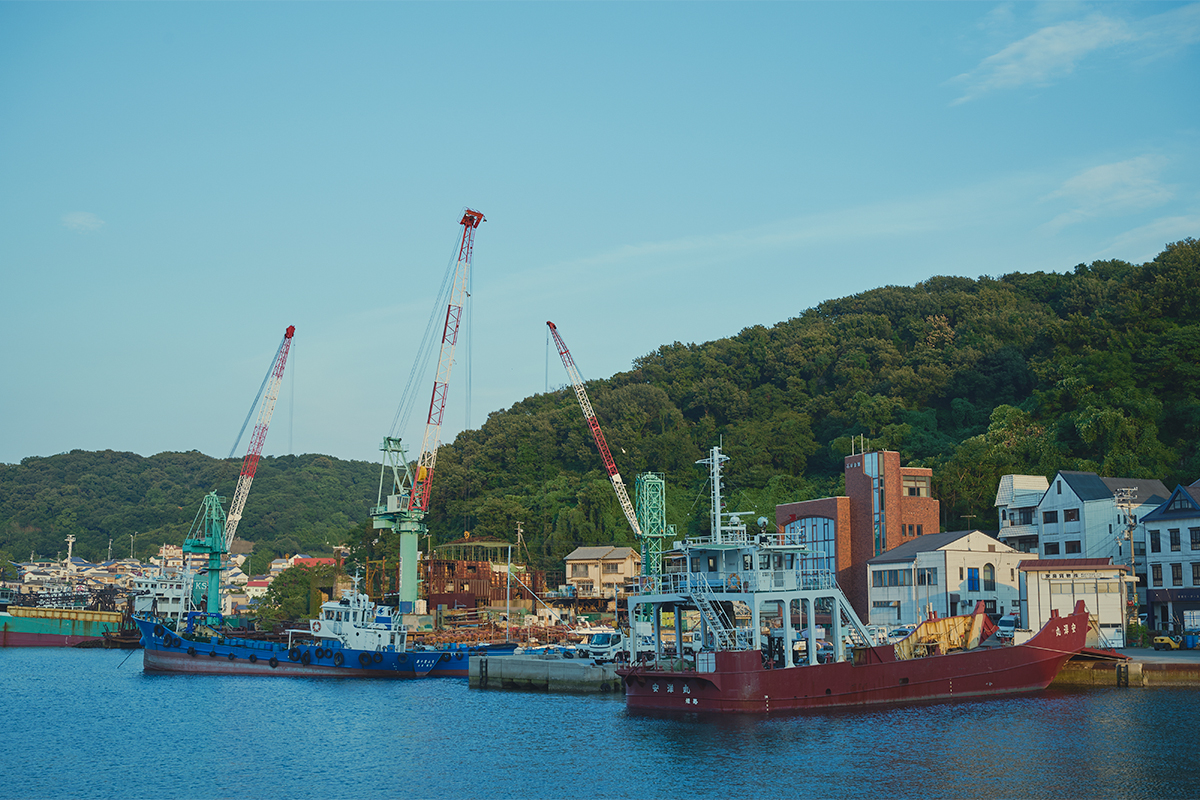 A familiar island sight: powerful “gattosen” cargo ships carrying quarried stone from Ieshima to destinations across Japan.
A familiar island sight: powerful “gattosen” cargo ships carrying quarried stone from Ieshima to destinations across Japan.
Only 30 minutes by ferry from Himeji Port, the Ieshima Islands form a peaceful archipelago of 44 islands large and small. The main island, Ieshima-honto, retains the feel of a fishing town, its slopes and narrow alleys inviting slow exploration and glimpses of everyday island life. Other inhabited islands include Bozejima, with its busy fishing port; Nogajima, known for its rugged, stony landscape; and Nishijima, whose western half is an active quarry area. Together, the four inhabited islands are home to around 4,000 residents.
Part of Ieshima’s charm lies in its unspoiled simplicity. Perfect for travelers seeking to “live like a local,” the islands invite you to experience the Seto Inland lifestyle through fishing, leisurely walks, and hearty fisherfolk cuisine.
Out to Sea with the Fishermen: An “Island Meal” Experience Using the Day’s Catch
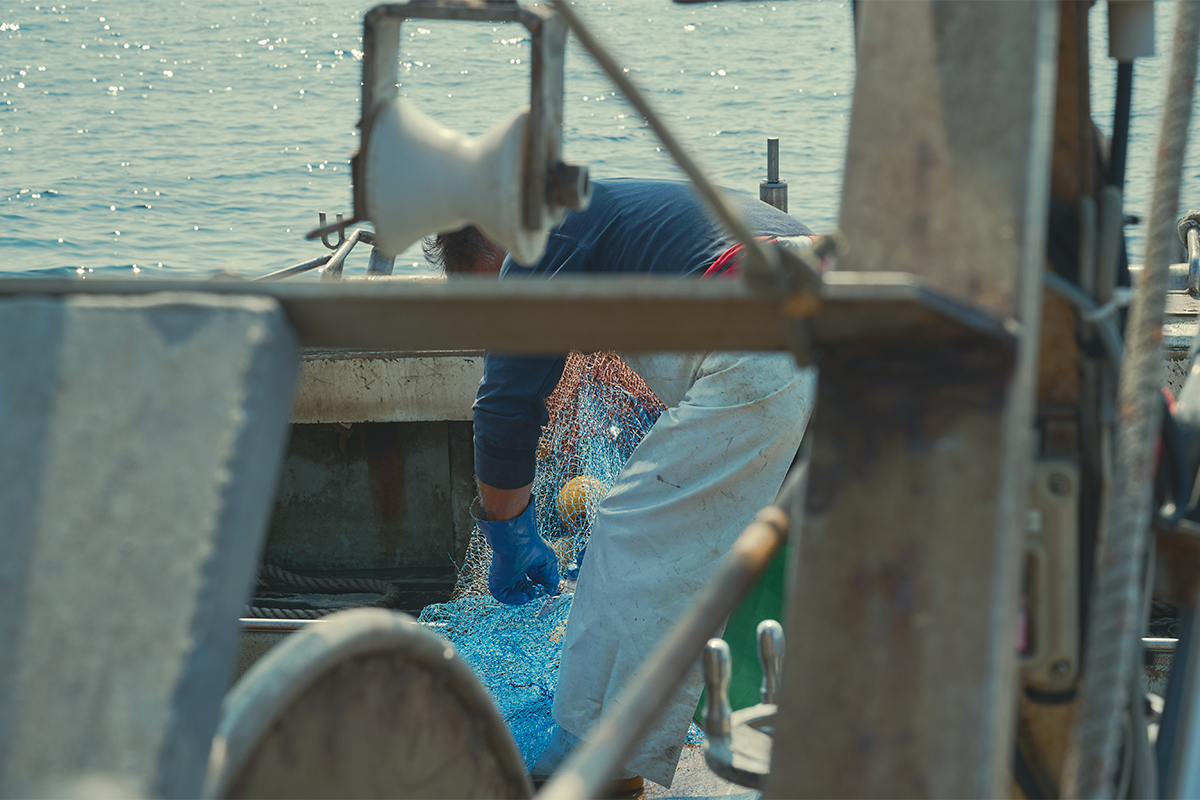 The “Stay at Ieshima Hale Terrace and Join a Bottom-Trawling & Cooking Experience” package includes two parts: a bottom-trawling excursion (for 1–10 participants, about 2.5 hours, flat rate 45,600 yen) and a cooking session back at the inn, preparing dishes with the catch alongside local “island mothers” (around two hours, 12,000–18,000 yen depending on group size).
The “Stay at Ieshima Hale Terrace and Join a Bottom-Trawling & Cooking Experience” package includes two parts: a bottom-trawling excursion (for 1–10 participants, about 2.5 hours, flat rate 45,600 yen) and a cooking session back at the inn, preparing dishes with the catch alongside local “island mothers” (around two hours, 12,000–18,000 yen depending on group size).
On Ieshima-honto, visitors can join hands-on programs that bring the island’s way of life into focus. Floating in Harimanada, the eastern part of the Seto Inland Sea, Ieshima is blessed with a rich variety of seafood—conger eel, shrimp, crab, sea bream, flounder, and more. This time, the experience begins aboard a fishing boat with a seasoned fisherman, learning the craft of bottom trawling—a method in which nets are lowered to the sea floor and drawn by the boat to gather fish.
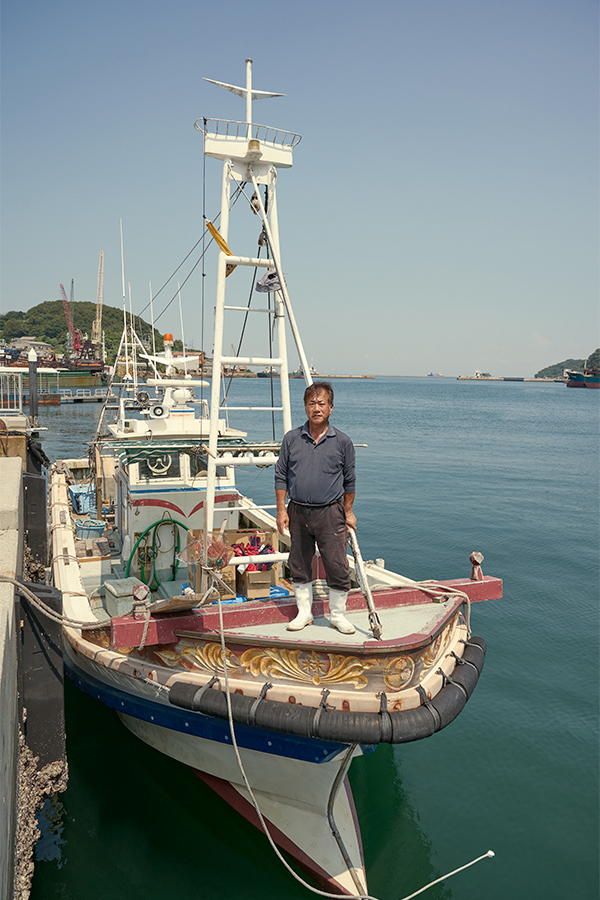
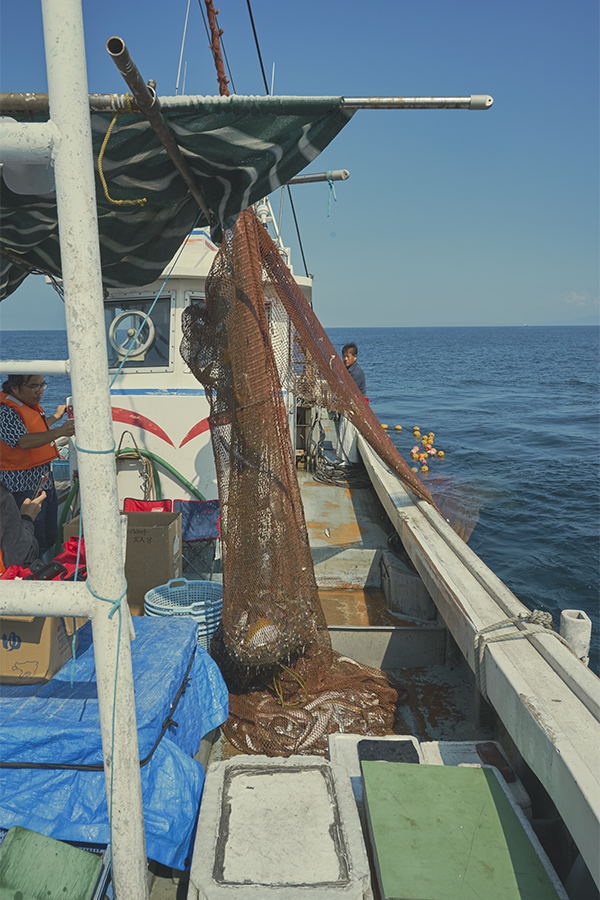
The boat is captained by Mr. Mori, a fisherman from Bozejima, where about 70 percent of residents work in the fishing industry.
Aboard Mr. Mori’s vessel, the journey heads out to open sea, passing Bozejima, Nogajima, and Nishijima along the way—about 40 minutes offshore. The nets are cast, and for 20 to 45 minutes (depending on the season) the boat tows them through the water. Then comes the fisherman’s signal—it’s time to haul them in. The heavy pull quickens your heartbeat: “What will we catch today?”
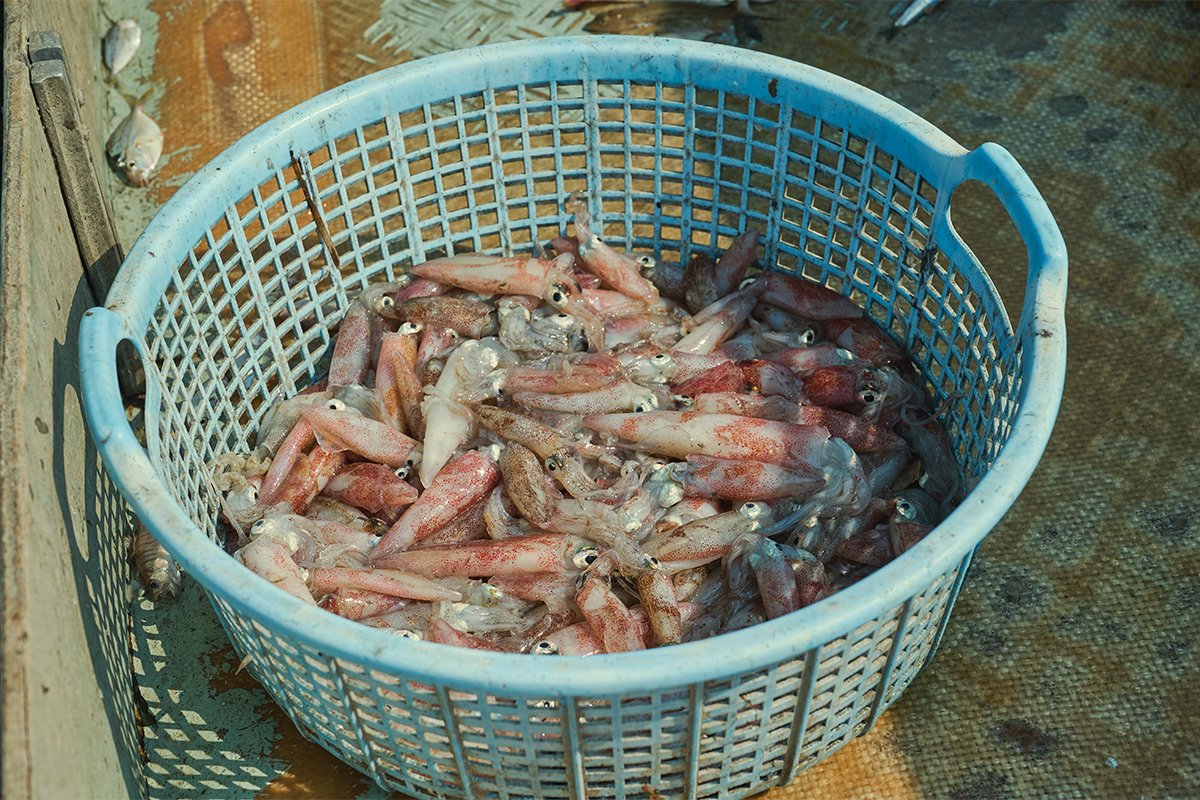
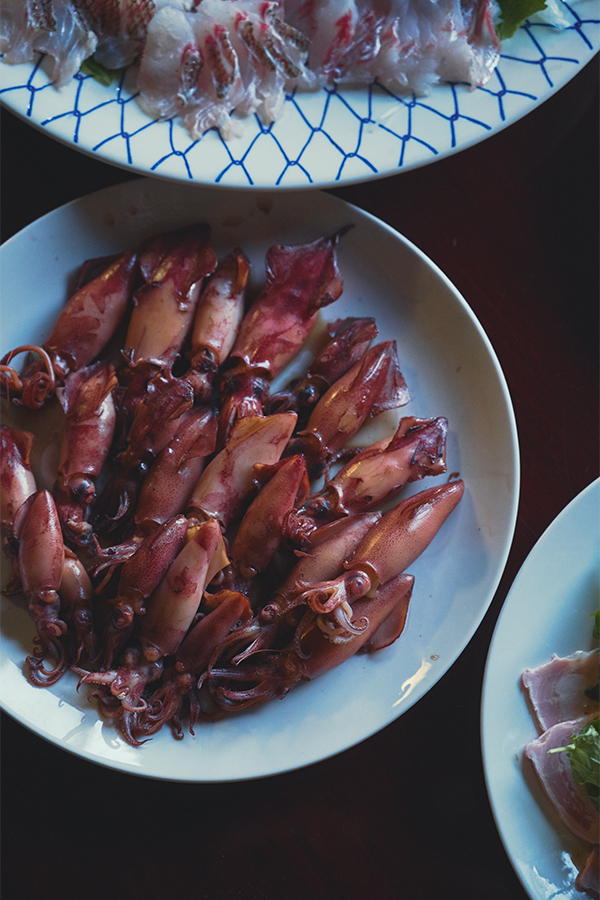
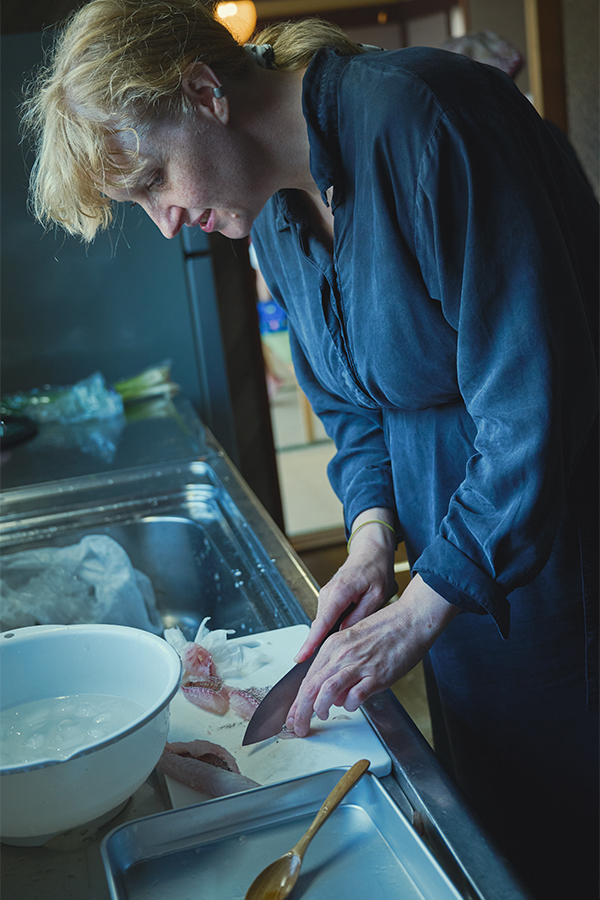
Today’s haul: small squid, glass shrimp, conger eel, sea bream, tiny shrimp, barracuda, and ubose fish. The catch is cooked in the kitchen at Ieshima Hale Terrace.
After the fishing trip, the group returns to Ieshima Hale Terrace, a stay-and-experience guesthouse, where local cooking experts teach how to prepare the day’s catch for dinner. On the menu: simmered squid and ubose, sashimi of sea bream, fritters of small shrimp and onion, and tai somen, a festive island dish of sea bream simmered in broth and served with noodles.
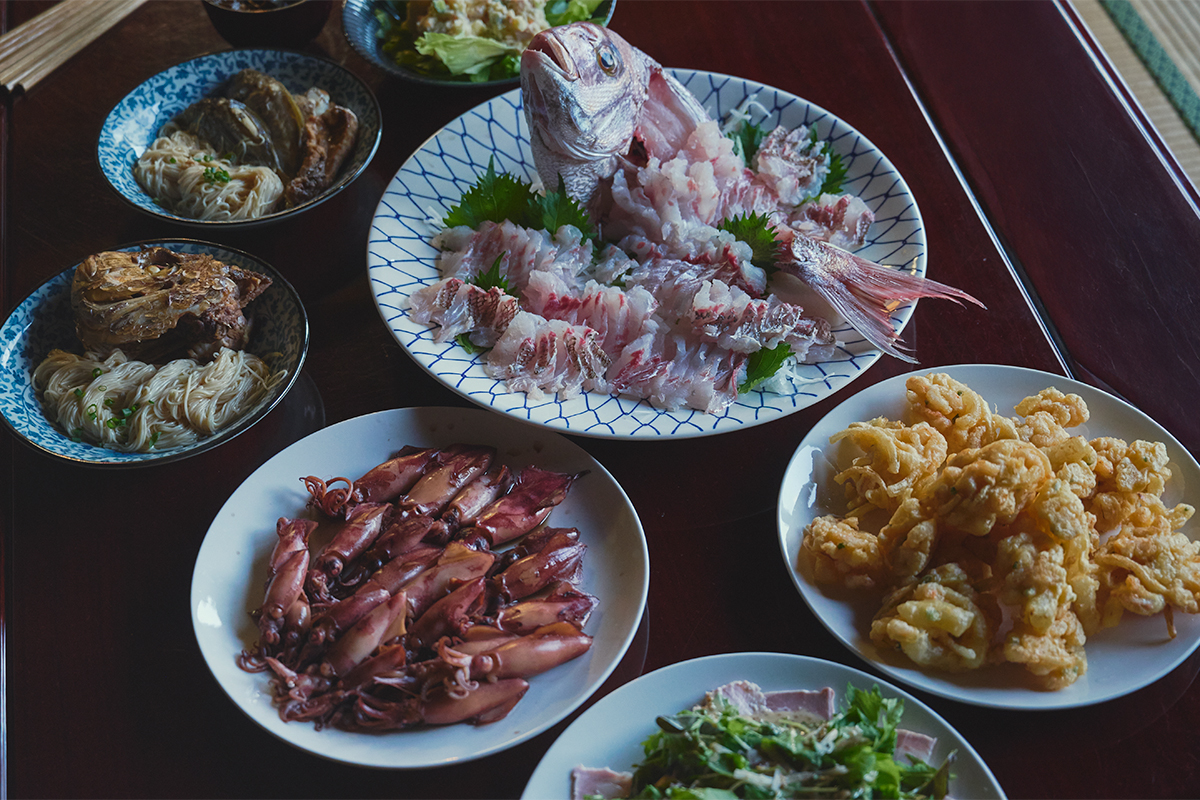 A feast of freshly caught island cuisine, included in the tour fee.
A feast of freshly caught island cuisine, included in the tour fee.
BOOK YOUR STAY IN HIMEJI
Exploring Ieshima on Foot with the Island Concierge
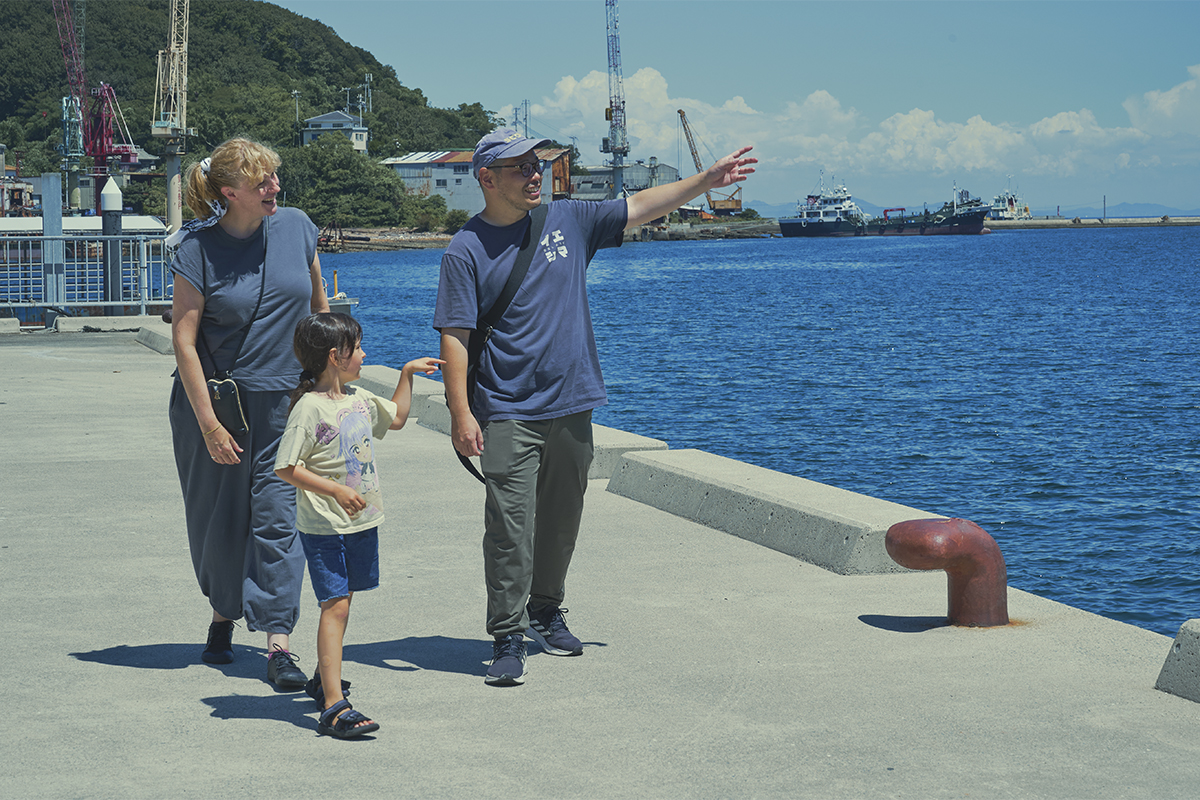 Right: Mr. Nakanishi. Guiding fee from 30,000 yen per group for a six-hour tour. For languages other than English, an interpreter is recommended.
Right: Mr. Nakanishi. Guiding fee from 30,000 yen per group for a six-hour tour. For languages other than English, an interpreter is recommended.
The next day, I set out to explore the island with Kazuya Nakanishi of Ieshima Concierge. The port town of Ieshima retains the nostalgic atmosphere of the Showa era. Across the water, the quarrying islands still in operation create a unique landscape where heavy industry and nature coexist. Within this calm passage of time, you can truly feel the island’s quiet heartbeat.
“Ieshima is the perfect place for travelers who enjoy discovering their own pleasures,” says Nakanishi. A leisurely walk reveals a world of everyday beauty—an indulgent moment to connect with the life and scenery that define the island.
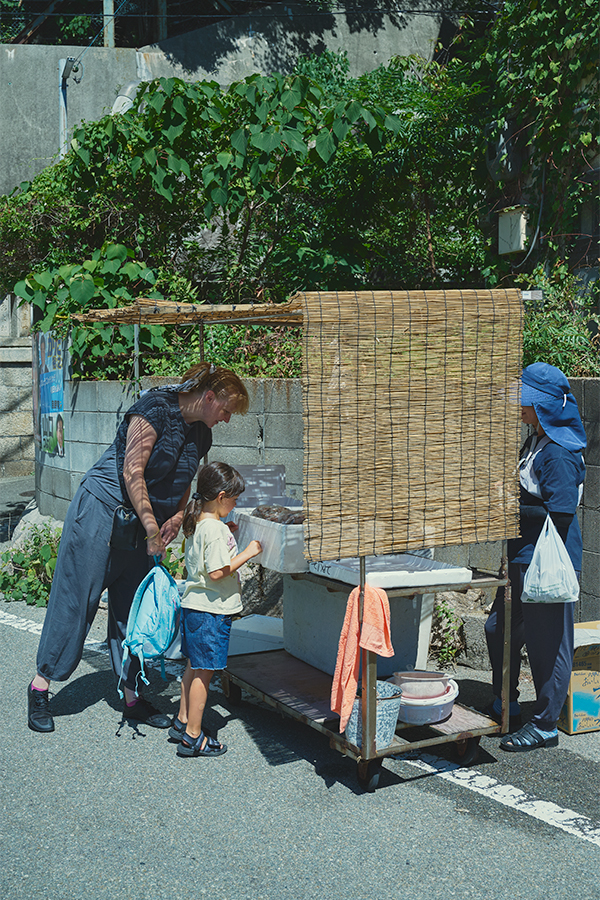
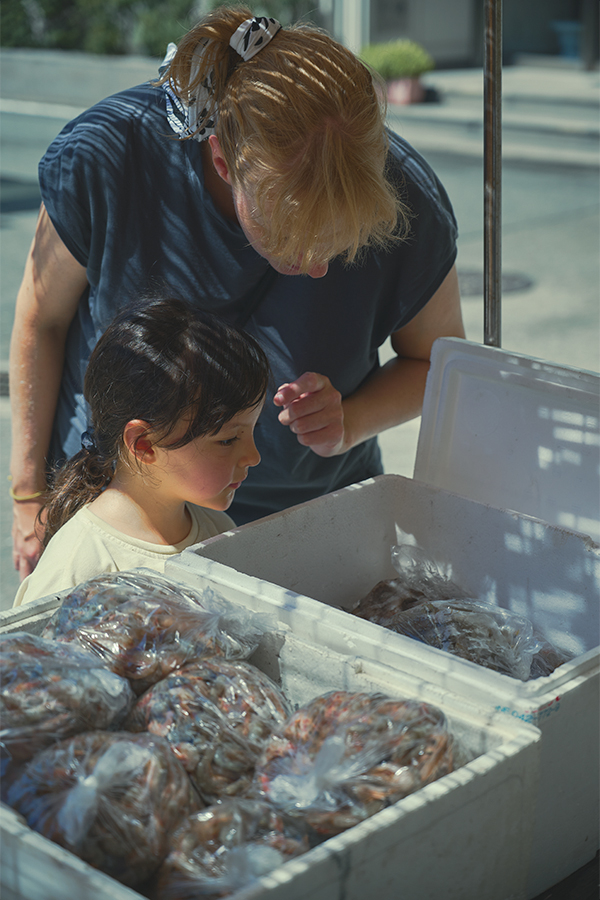
A familiar local scene: wives selling the seafood their fisherman husbands caught that morning.
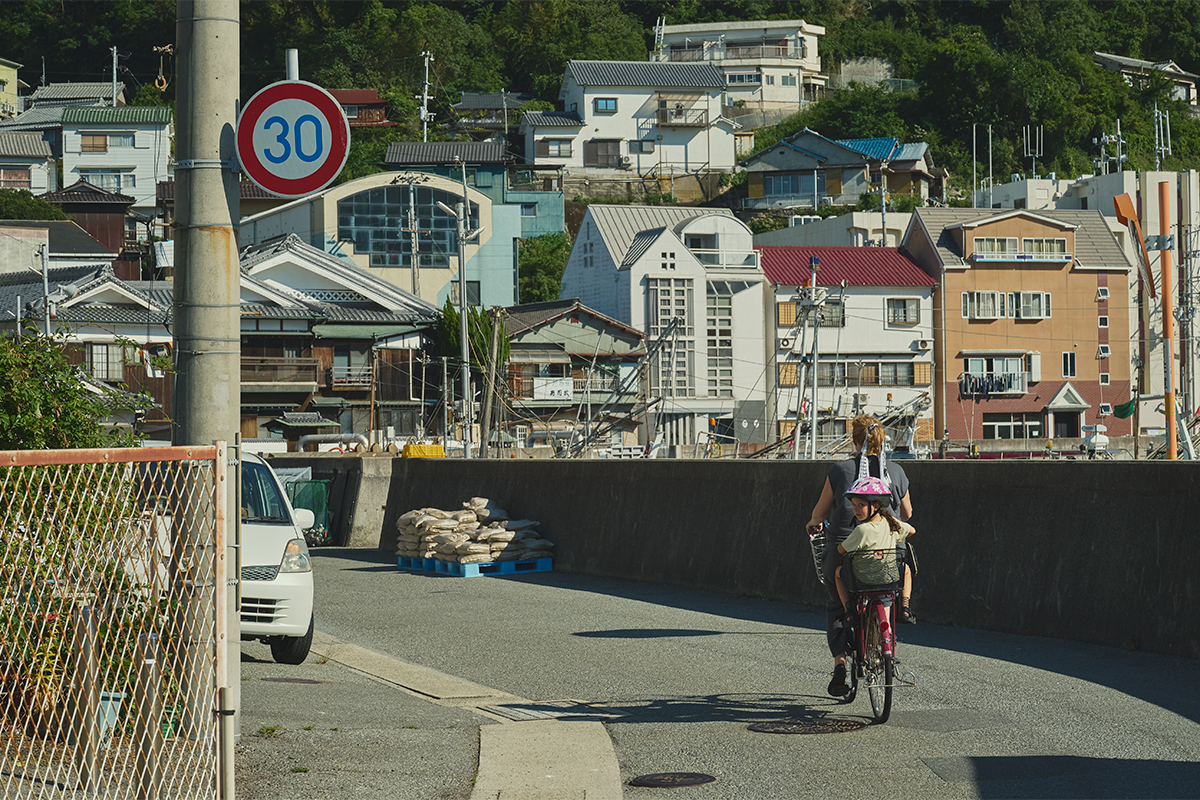 The friendly owner of Tako-yaki ANGE, a popular gathering spot for islanders, lends a bicycle for a quick ride around the island. Rental bicycles are also available: at the Ieshima Tourism Business Association, electric-assist bikes cost 1,500 yen per five hours per bike; at Kofuku Liner, 600 yen per bike per day.
The friendly owner of Tako-yaki ANGE, a popular gathering spot for islanders, lends a bicycle for a quick ride around the island. Rental bicycles are also available: at the Ieshima Tourism Business Association, electric-assist bikes cost 1,500 yen per five hours per bike; at Kofuku Liner, 600 yen per bike per day.
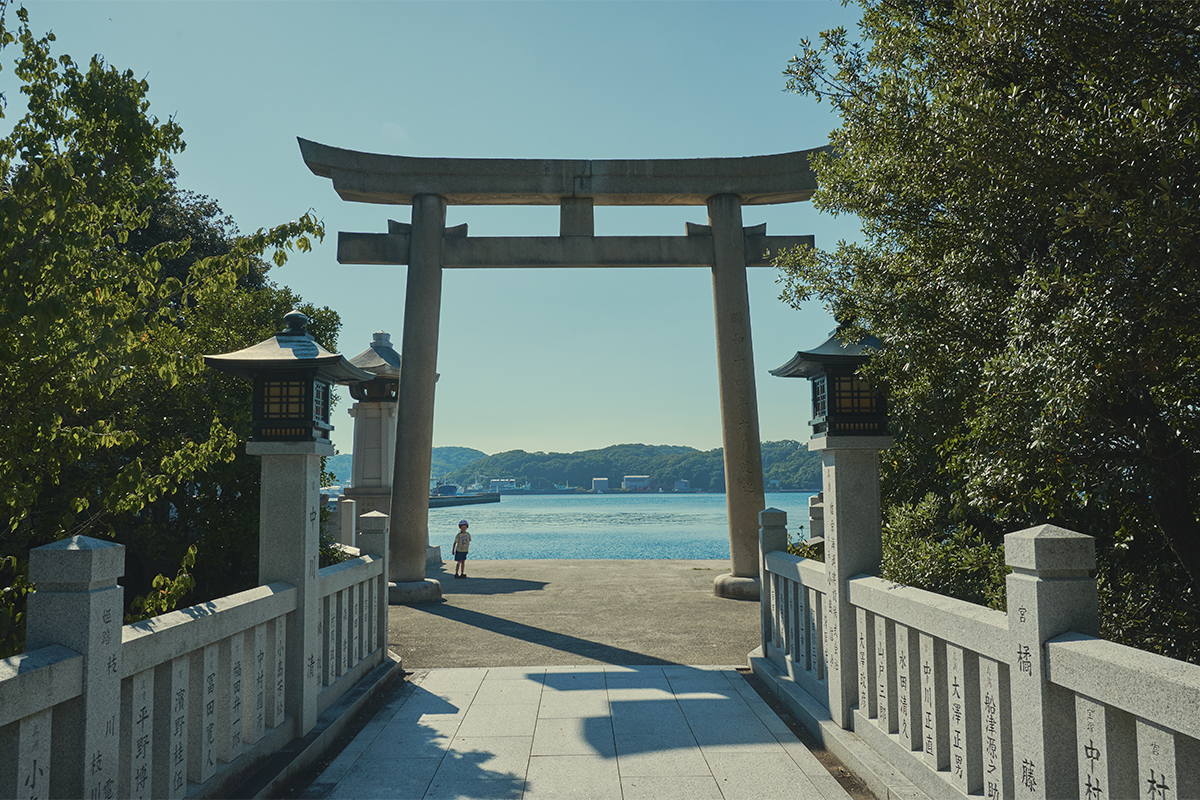 A torii gate facing the sea.
A torii gate facing the sea.
Perched on a hill near Miya Port, Ieshima Shrine is an ancient Shinto shrine dedicated to the heavenly deities (amatsukami). For centuries, it has been the spiritual heart of the island, watching over fishing and maritime safety. From its grounds, visitors can take in sweeping views of the Seto Inland Sea and the island townscape—a perfect stop during a stroll to enjoy both scenery and a glimpse into the island’s faith and history.
Hearty Fishermen’s Hotpot, Island Style
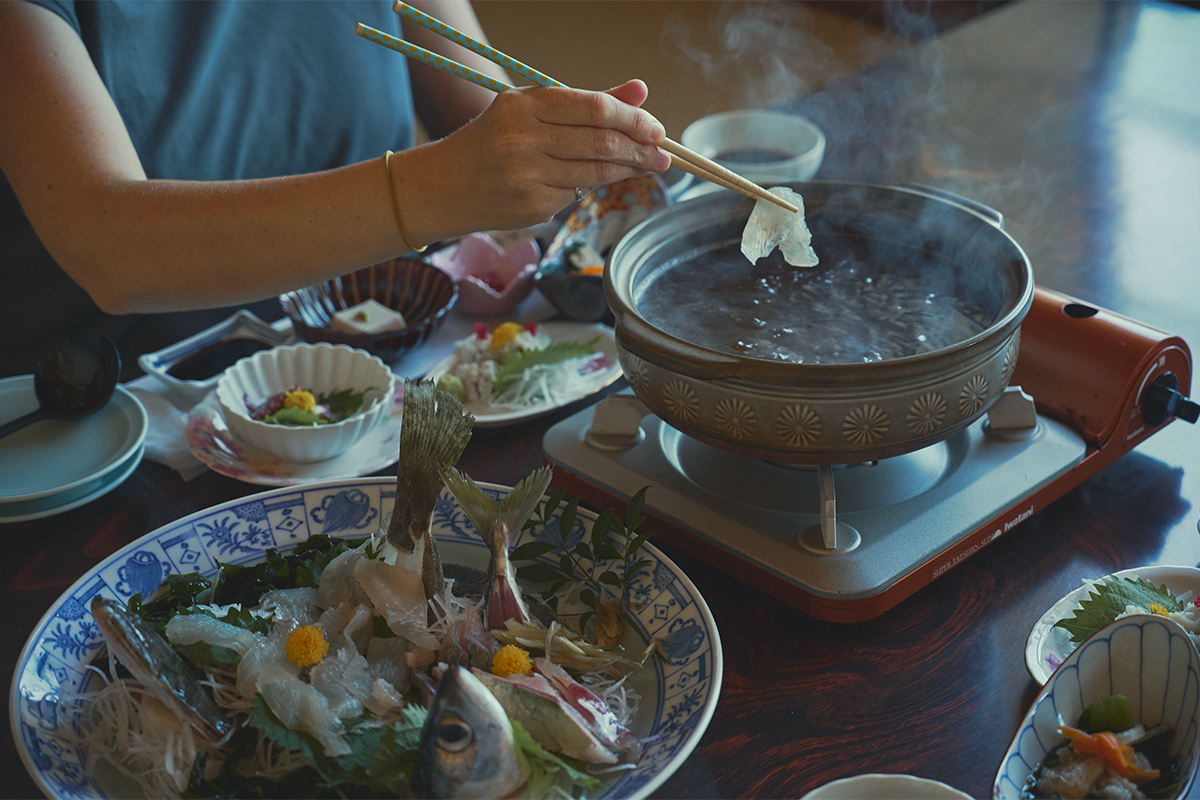
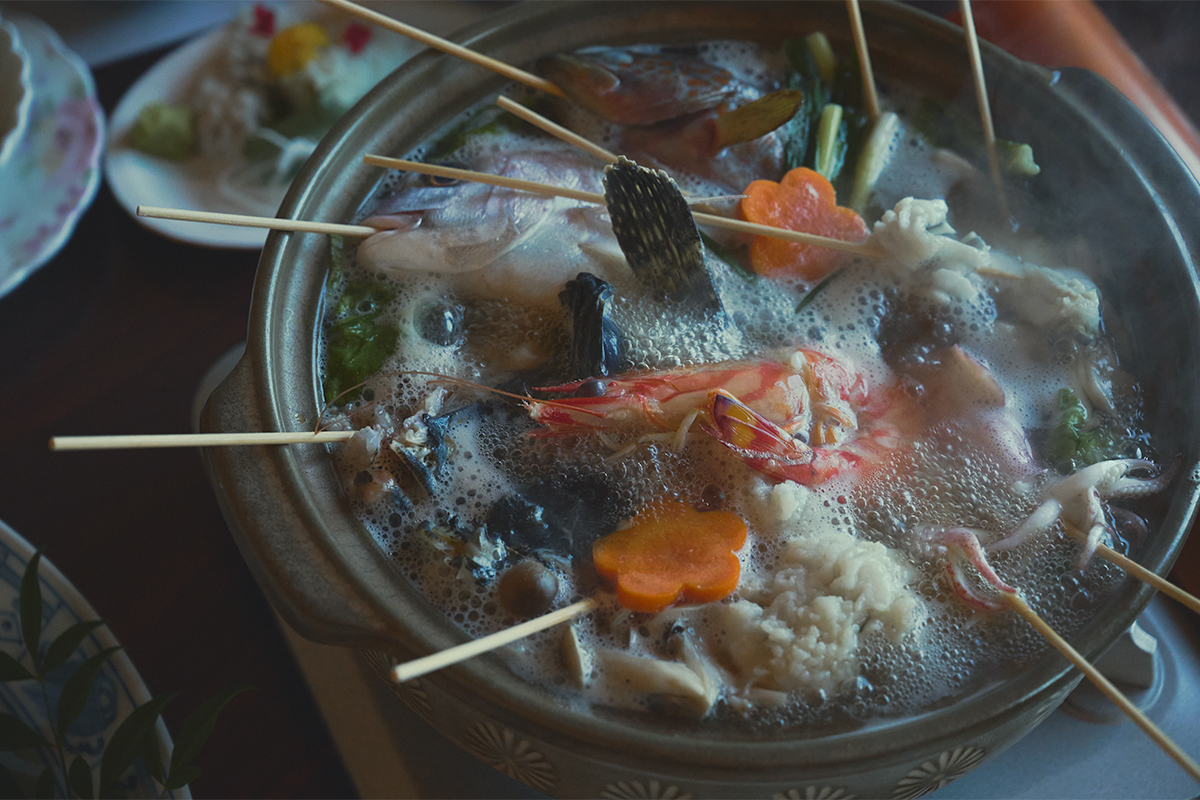 Jako-nabe course: 8,250 yen per person. Thick cuts of fish are skewered, then dipped into the broth shabu-shabu style—simple and satisfying.
Jako-nabe course: 8,250 yen per person. Thick cuts of fish are skewered, then dipped into the broth shabu-shabu style—simple and satisfying.
Facing Mauro Port, the restaurant inn Okabe is famous for its jako-nabe, a bold and generous hotpot featuring freshly caught seafood from the Seto Inland Sea. Seasonal fish such as conger eel, sea bream, flounder, crab, and shrimp are simmered in a simple broth of kelp and fish stock, producing a soup rich in the natural flavors of the ingredients. Originally a fishermen’s dish made to use small fish not sold at market, it has been refined and revived as part of the island’s community revitalization.
The aroma rising with the steam is irresistible, and with the first sip, the deep ocean flavor fills your mouth. Bite into the plump fish or the vegetables steeped in umami, and the robust, soulful taste of this fishermen’s town brings an instant smile. The perfect finish is tamago zosui, a rice-and-egg porridge made with the concentrated broth—warming both body and heart.
A bowl of Ieshima’s fishermen’s hotpot is a must for anyone visiting the island.
Stay in a Private Island House and Experience Daily Life
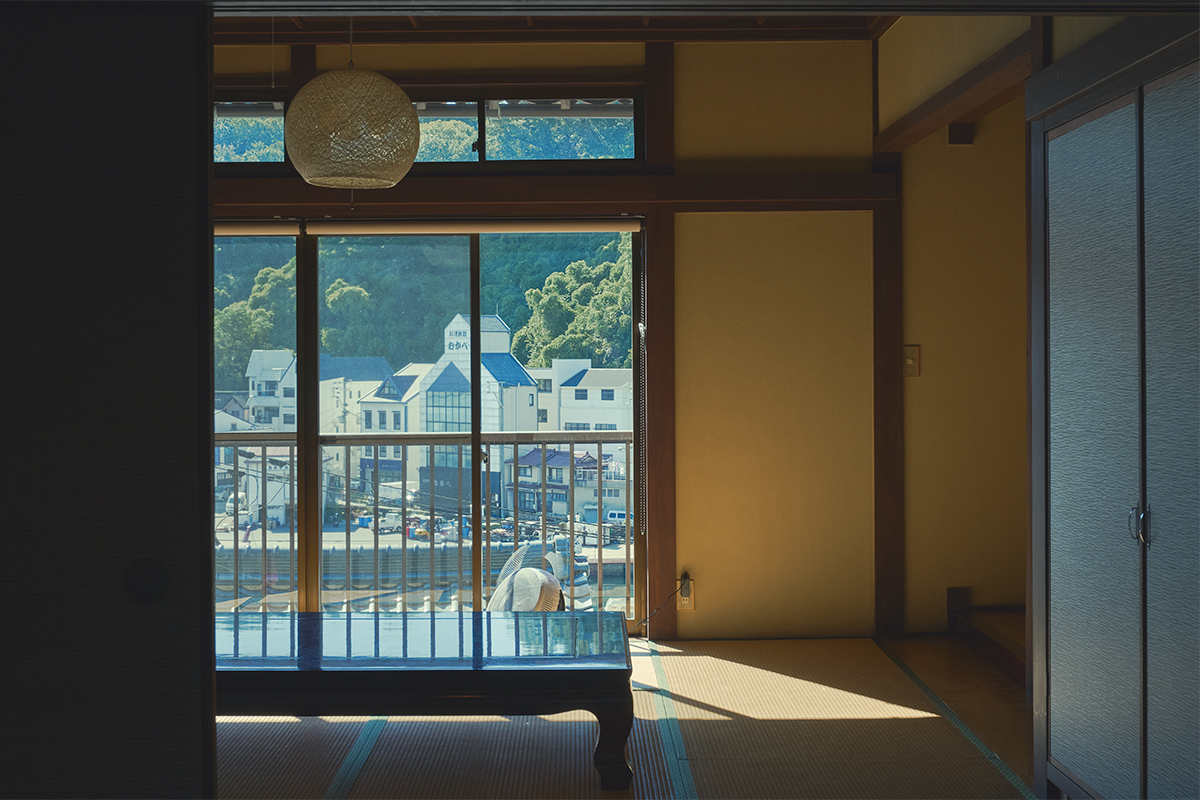 Living-dining area at Ieshima Hale Terrace, offering sweeping sea views. From 46,000 yen per night for four guests. Prices vary by season, number of guests, and weekday or weekend stays.
Living-dining area at Ieshima Hale Terrace, offering sweeping sea views. From 46,000 yen per night for four guests. Prices vary by season, number of guests, and weekday or weekend stays.
The private rental accommodation Ieshima Hale Terrace sits on a hill overlooking Mauro Port, the island’s main gateway. In addition to fishing excursions, guests can enjoy walking tours and hands-on craft activities that connect with everyday island life.
More than a place to stay, it offers visitors the sense of truly being welcomed into the community—a lodging where you can experience “life on the island” itself.
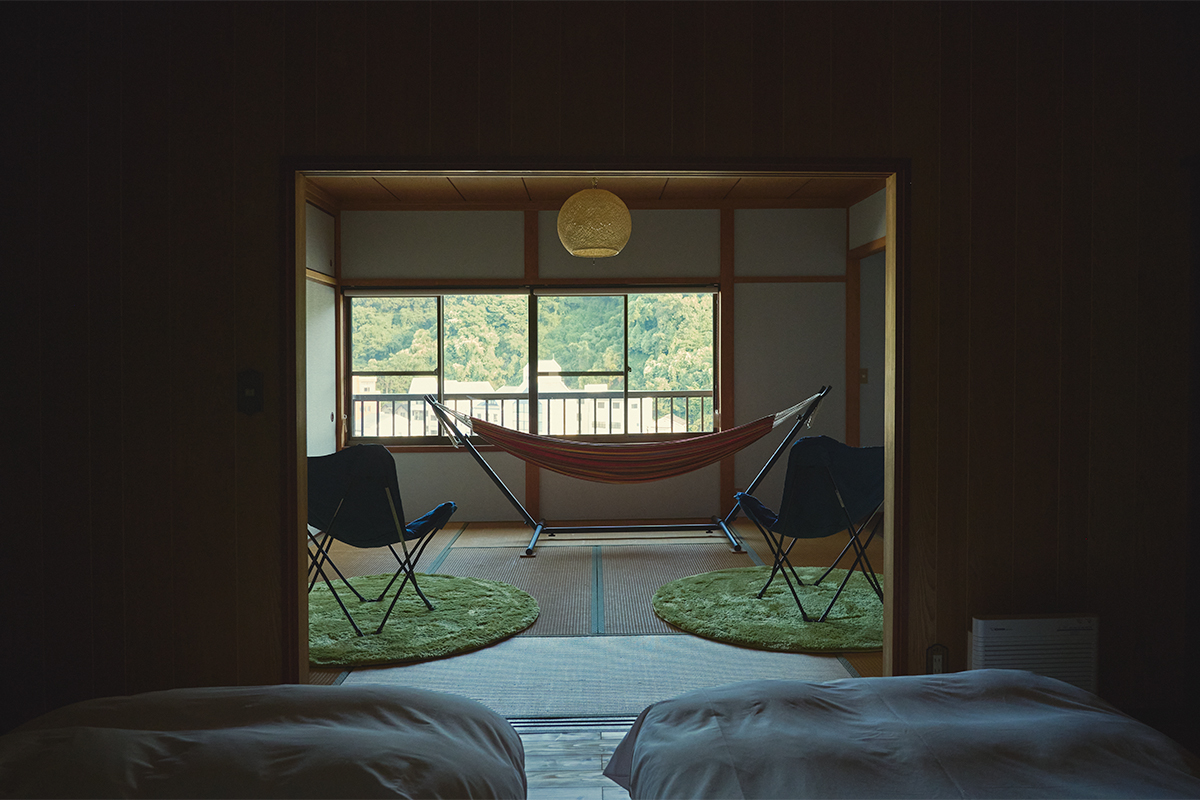 The house has four bedrooms.
The house has four bedrooms.
BOOK YOUR STAY IN HIMEJI
An Island That Feels Like a Museum: A Day Exploring Naoshima by Bike
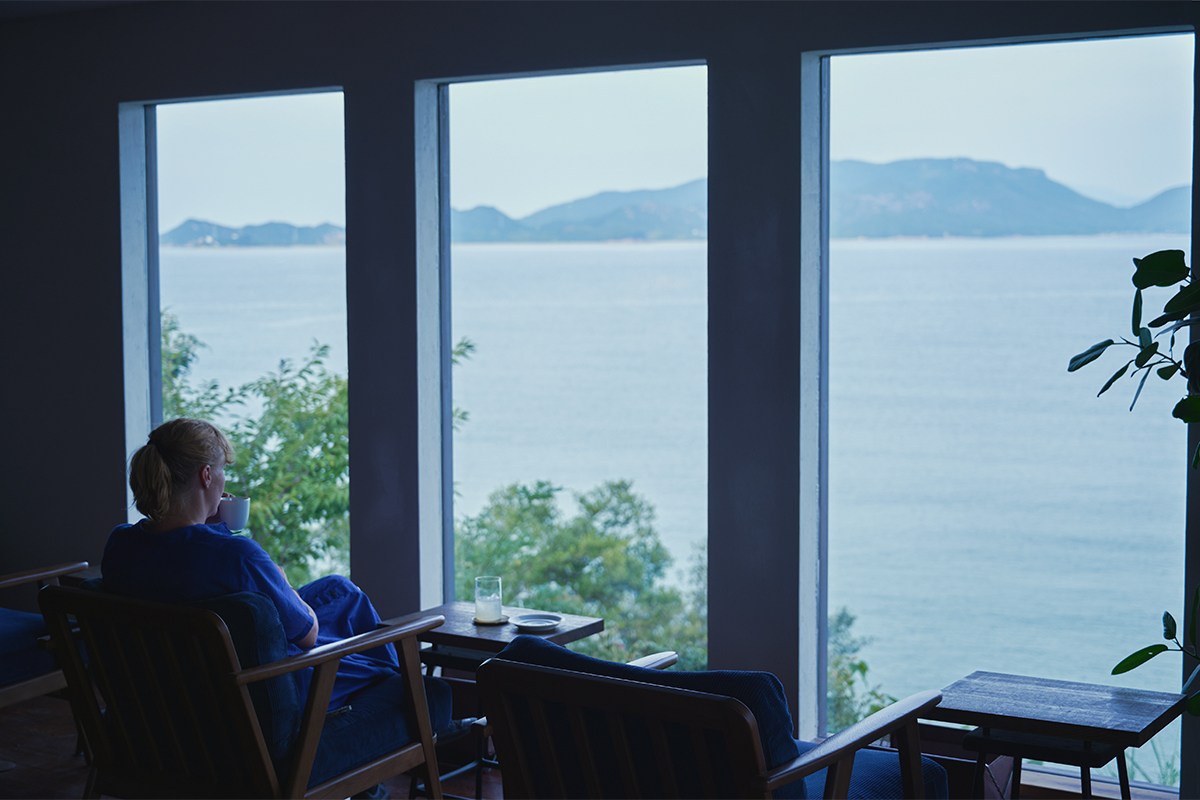 Unplug from the digital world and take time for quiet reflection.
Unplug from the digital world and take time for quiet reflection.
After returning to the mainland from Ieshima and transferring to the ferry from Okayama, a 15-minute ride brings you to Naoshima, a small island floating in the Seto Inland Sea. Though home to only around 3,000 people, it has become a global destination—known as a “sacred island of art.”
On Naoshima, the entire island is designed as an open-air museum, where simply walking its paths becomes an encounter with art. As you step off the ferry, the first sight that greets you is Yayoi Kusama’s monumental sculpture Pumpkin, its vivid form standing out against the sea and sky—a landmark that has come to symbolize the island itself. Across Naoshima, architecture by Tadao Ando such as the Chichu Art Museum and Lee Ufan Museum, together with traditional homes transformed for the Art House Project, create a landscape where art, daily life, and nature exist in harmony.
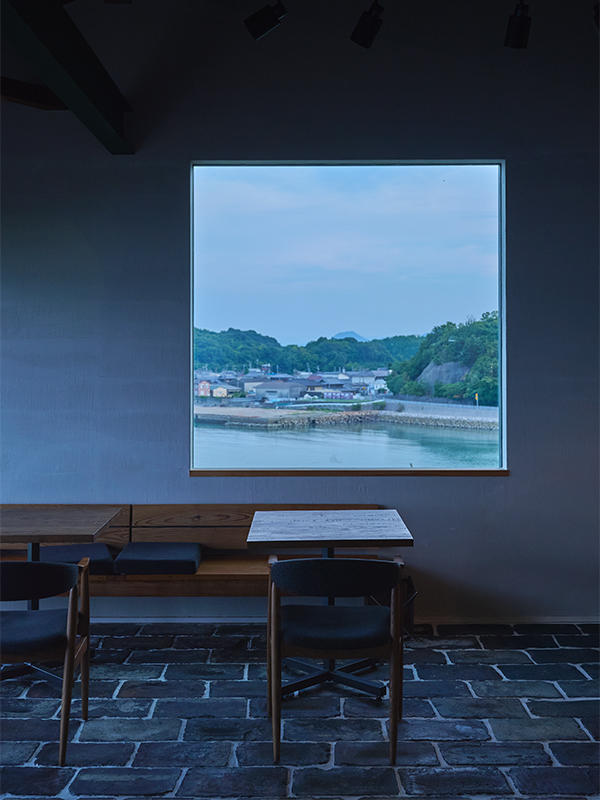
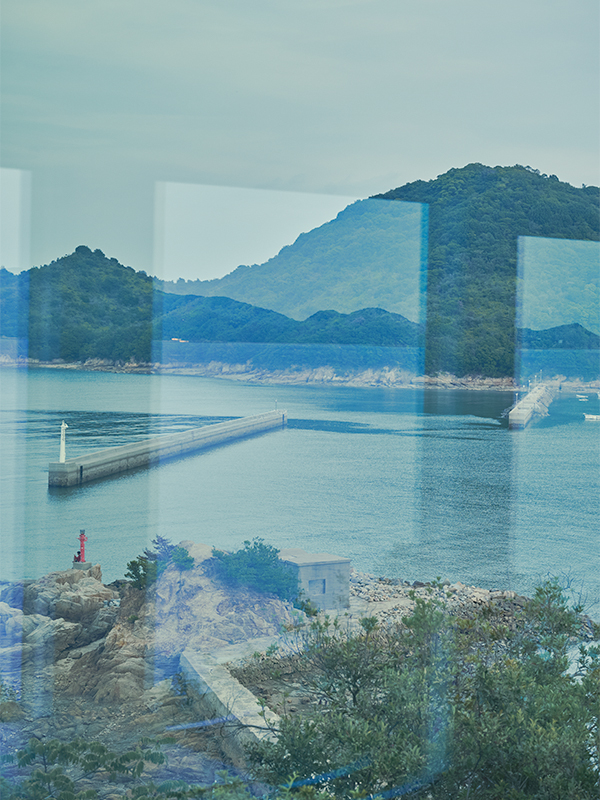
At Naoshima Coffee, the hand-dripped Naoshima Coffee Blend is 700 yen. Beans and drip packs make popular souvenirs.
A perfect stop between art visits is Naoshima Coffee, a café perched on a hill overlooking the sea, about a five-minute walk from the Naoshima New Museum, the tenth facility of Benesse Art Site Naoshima, which opened in May 2025.
Through its large windows spreads a breathtaking view of the Seto Inland Sea. With a cup in hand, you can spend a moment doing absolutely nothing—an indulgence in stillness and space.
The café’s original blend, roasted in the image of Naoshima’s serene scenery, is mellow yet aromatic, and is also served at the Naoshima New Museum Café. Loved by locals as well as visitors, it captures the island’s calm essence in every sip.
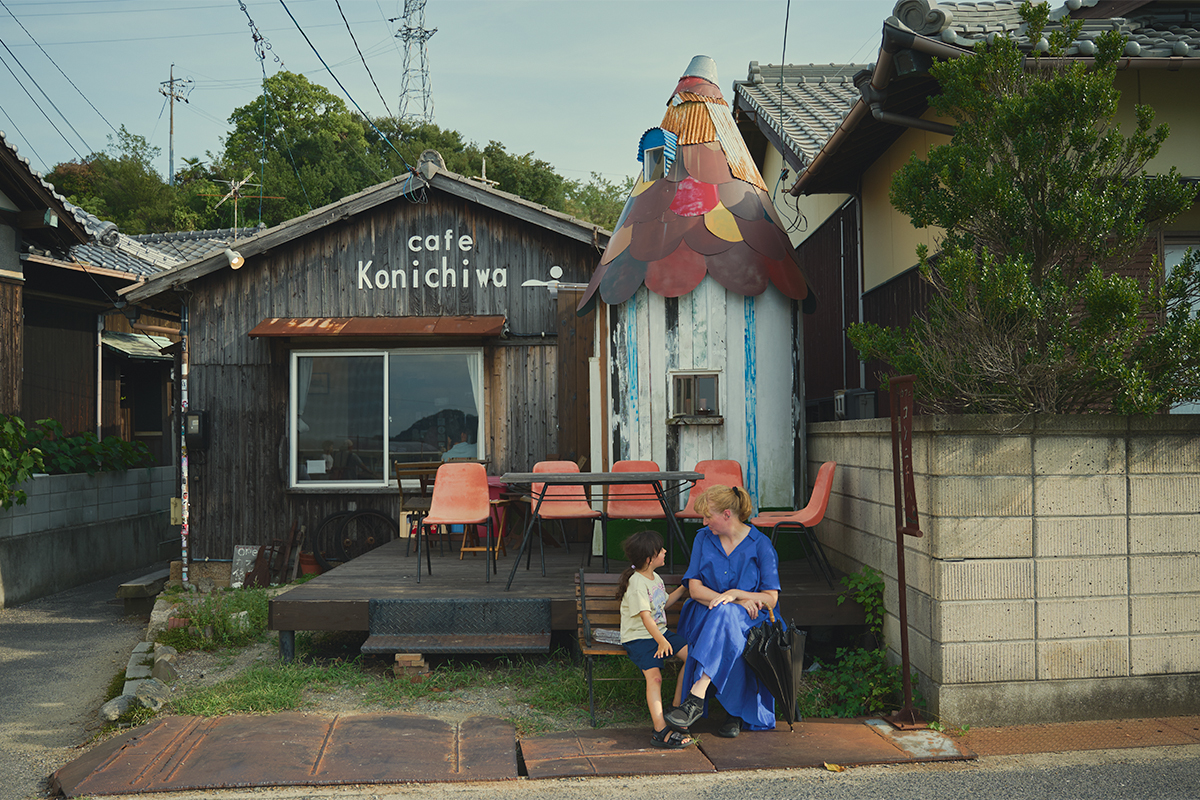 Taking a short break on the bench in front of Naoshima Café Konnichiwa.
Taking a short break on the bench in front of Naoshima Café Konnichiwa.
Wander down one of Naoshima’s small lanes and you might find a cozy hideaway like Naoshima Café Konnichiwa, a relaxed yuru-café housed in a renovated traditional home. Here you can enjoy generous portions of curry or risotto while gazing out over the sea.
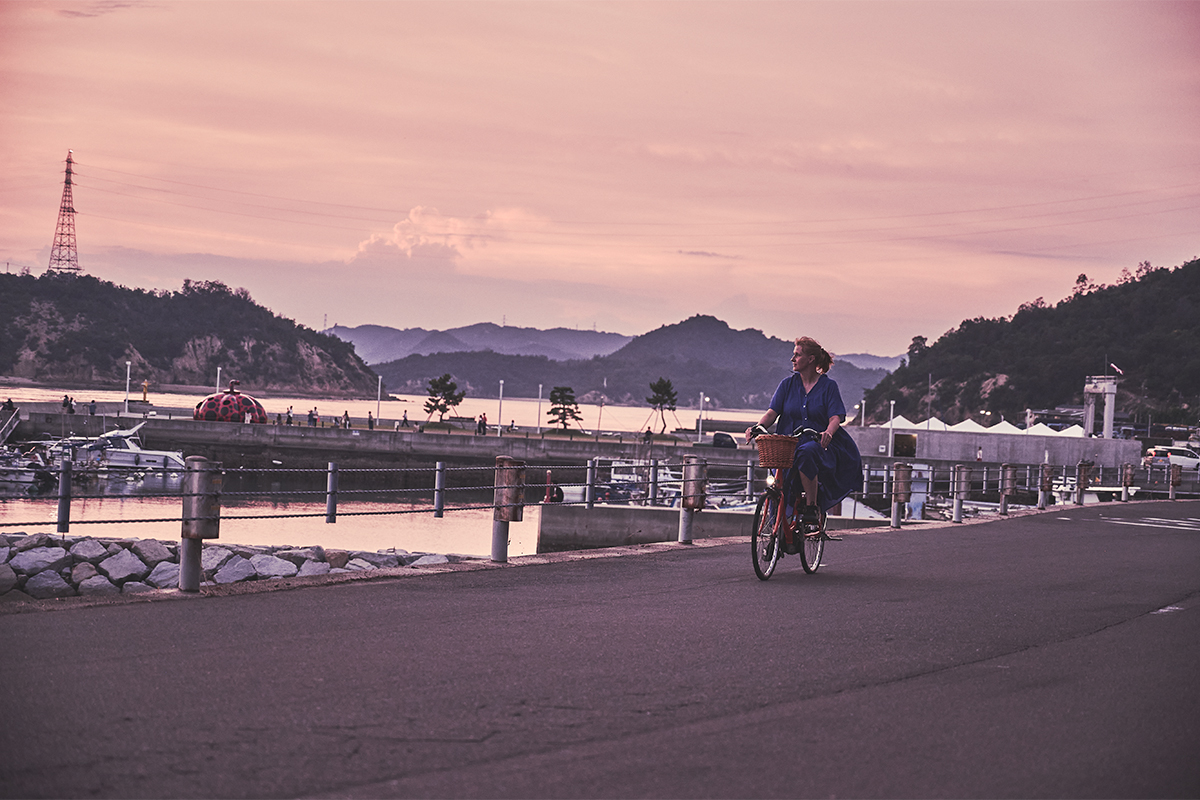 Yayoi Kusama, Red Pumpkin (2006), Naoshima, Miyanoura Port Green Park / Set against the vivid red sunset at the island’s gateway, Miyanoura Port.
Yayoi Kusama, Red Pumpkin (2006), Naoshima, Miyanoura Port Green Park / Set against the vivid red sunset at the island’s gateway, Miyanoura Port.
For those who wish to see it all, Naoshima Tours offers private guided itineraries by rental bike—half-day courses start from 30,000 yen (details and pricing vary by season). Tailored to each guest’s interests, these tours provide a thoughtful introduction to the island’s art, cuisine, and quiet charm.
(Place visited)
Stay at Ieshima Hale Terrace and Join a Bottom-Trawling & Cooking Experience
(Ieshima Tourism Business Association)
Bicycle Rentals
(Ieshima Tourism Business Association)
https://h-ieshima.jp/news/5345
Ieshima Concierge Guided Tours
Restaurant Inn Okabe
http://ieshima-okabe.travel.coocan.jp/
Private Accommodation “Ieshima Hale Terrace”
Naoshima Coffee
https://www.instagram.com/naoshima_coffee/
Naoshima Café Konnichiwa
Naoshima Tours





